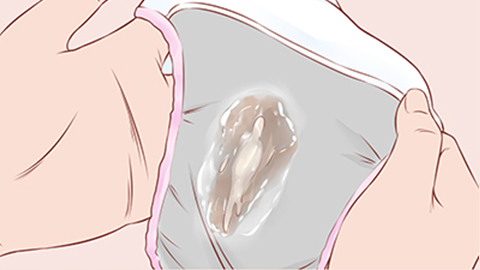What does it mean when there is a lot of white vaginal discharge that looks like tofu residue?
Normally, the main causes of vaginal discharge resembling tofu residue include hormonal fluctuations, improper hygiene practices, vulvovaginal candidiasis, mixed vaginitis, diabetes mellitus complicated with vaginal infection, etc. If discomfort symptoms occur, it is recommended to seek timely medical consultation and treatment at a regular hospital. Detailed analysis is as follows:
1. Hormonal Fluctuations
During pregnancy or ovulation, elevated estrogen levels cause increased vaginal discharge. If not cleaned promptly, accumulated secretions may appear as tofu residue without significant odor. Frequently change cotton underwear, wash the vulva with warm water, keep the vulva dry, avoid using irritating cleansers, and replace sanitary products regularly.

2. Poor Hygiene Habits
Long-term use of tight-fitting, non-breathable underwear or prolonged use of sanitary products during menstruation can cause vaginal dampness, bacterial growth, and changes in the appearance of discharge, making it resemble tofu residue. Replace tight underwear with loose, breathable alternatives, expose washed underwear to sunlight for disinfection, change sanitary products every 2-3 hours during menstruation, and avoid long-term use of panty liners.
3. Vulvovaginal Candidiasis
Excessive proliferation of Candida can invade the vaginal mucosa and cause inflammation, resulting in increased vaginal discharge resembling tofu residue accompanied by vulvar itching and burning pain. Under medical guidance, medications such as clotrimazole suppositories, miconazole nitrate suppositories, or fluconazole capsules can be used. Avoid sexual activity during treatment and wash personal items separately.
4. Mixed Vaginitis
Simultaneous infection with Candida and bacteria severely disrupts the vaginal microenvironment, causing vaginal discharge to appear as tofu residue with a fishy odor, accompanied by vulvar redness and pain. Under medical guidance, medications such as metronidazole-clotrimazole suppositories, clindamycin phosphate vaginal gel, or itraconazole capsules can be used. After treatment, perform routine vaginal discharge tests to confirm resolution of inflammation.
5. Diabetes Complicated with Vaginal Infection
Poor glycemic control leads to glucose in urine that stimulates the vagina, promoting Candida growth and causing recurrent vaginal discharge resembling tofu residue. Under medical guidance, use medications such as metformin hydrochloride tablets, gliclazide tablets, or insulin injections to control blood sugar levels, while using clotrimazole suppositories to treat vaginal infection. Regularly monitor both blood glucose and vaginal discharge conditions.
In daily life, maintain vulvar cleanliness, avoid indiscriminate use of antibiotics, control sugar intake to prevent diabetes, choose breathable clothing to reduce vaginal dampness, and undergo regular gynecological examinations to promptly detect and manage vaginal inflammation.





